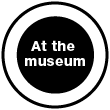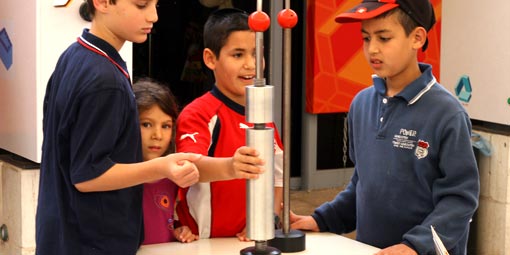


 |
||
 |
||
|
The display demonstrates an illusion of perceived weight when two metal cylinders are lifted. The illusion is created by the fact that what we expect to feel is not what we actually feel. Our brains makes assumptions according to what we see: the two cylinders appear to be made of the same material. That assumption affects the expected weight of the two cylinders. The difference between the expected weight and the actual weight creates the sensation that the two cylinders together are lighter than the small cylinder alone. Experience tells us that this is impossible, but the illusion still remains. In this illusion of size and weight, we perceive the weight of a large object to be greater than that of a small object, even though both actually weigh the same. The common explanation (a hundred years old) is that visual information leads us to expect that a large object will be heavy. We therefore use more strength to lift it than we would for a small object. As a result of our effort, the large object rises up quickly and easily, and it appears to us to be lighter than it really is. We can see a "real-life" example of this phenomenon when we lift a bag full of items at the supermarket checkout counter and it feels light as a feather. Recent research has shown that under certain conditions we can disassociate our perceptual experience from our muscle behavior. Our muscles "learn" as they perform the motion that lifting a heavy object does not require a lot of strength; yet we still perceive the object as heavier than it really is. Links:
|
||

 When Our Eyes Fool Our Hands
When Our Eyes Fool Our Hands